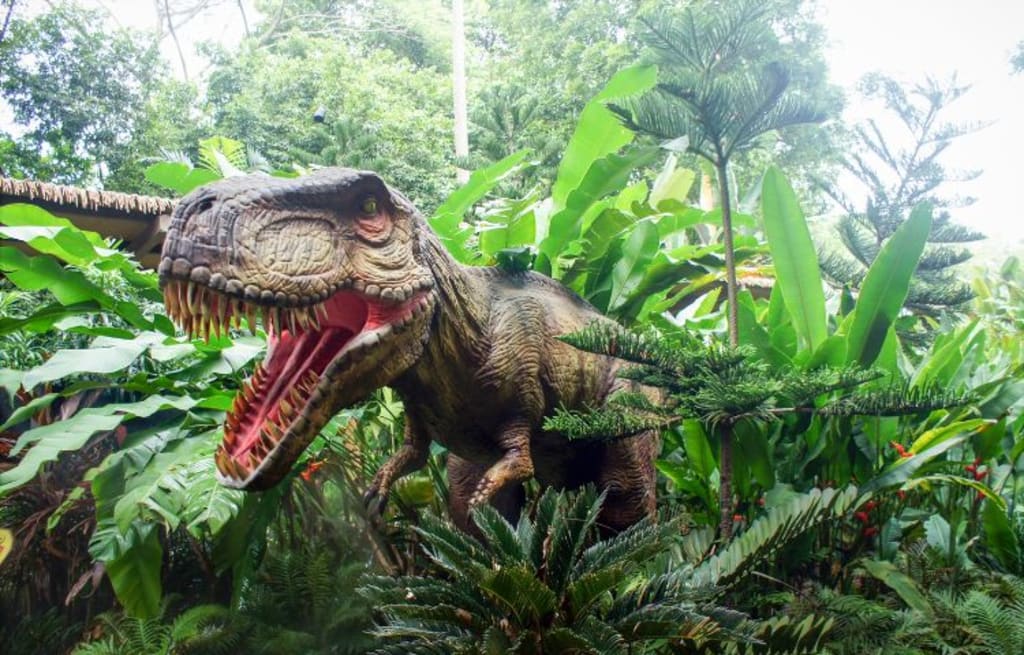
The extinction of dinosaurs is one of the most intriguing mysteries in Earth's history. These magnificent creatures that once roamed the planet suddenly vanished, leaving behind only fossils and countless questions. In this article, we'll explore the leading theories and scientific evidence behind the extinction of dinosaurs.
Introduction
Dinosaurs, the incredible reptilian giants that ruled the Earth for millions of years, met a cataclysmic end around 65 million years ago. Their disappearance opened the door for the rise of mammals and ultimately, the evolution of humans. While the exact cause of their extinction remains a subject of debate, several prominent theories shed light on the events leading to their demise.
The Impact Theory
The most widely accepted theory explaining dinosaur extinction is the impact theory. This theory suggests that a massive asteroid or comet impact triggered a series of events that led to the dinosaurs' downfall. This event is often referred to as the "K-T event" or the Cretaceous-Tertiary extinction event.
Evidence for the Impact Theory
Crater Discovery: In the 1980s, scientists identified the Chicxulub crater buried beneath the Yucatan Peninsula in Mexico. This crater, approximately 150 kilometers (93 miles) in diameter, is believed to be the result of the impact that occurred around the same time as the dinosaur extinction.
Iridium Layer: A layer of sediment found around the world from the K-T boundary contains abnormally high levels of iridium, an element rare on Earth's surface but abundant in asteroids and comets. This lends further support to the impact theory.
Shocked Quartz: Shocked quartz crystals, which form under extreme pressure, have been discovered in the K-T boundary layer, providing further evidence of a catastrophic impact event.
The Impact's Aftermath
The impact theory proposes that the asteroid collision generated enormous amounts of heat, causing wildfires, acid rain, and a "nuclear winter" effect. This catastrophic environmental disruption would have led to the collapse of ecosystems and the extinction of many species, including the dinosaurs.
Volcanic Activity
While the impact theory is the leading explanation, some scientists argue that massive volcanic activity may have played a role in the dinosaur extinction. The Deccan Traps in India, a massive volcanic province, erupted extensively around the time of the extinction event.
The Volcanic Hypothesis
Climate Alteration: The Deccan Traps eruptions released vast amounts of volcanic gases, including carbon dioxide and sulfur dioxide, into the atmosphere. These gases could have caused significant climate change, leading to cooler temperatures and altered weather patterns.
Environmental Stress: The volcanic eruptions may have caused environmental stress, reducing food availability and leading to a decline in dinosaur populations.
Combined Impact: Some scientists suggest that a combination of both the impact event and volcanic activity contributed to the mass extinction, creating a one-two punch that dinosaurs could not survive.
Gradual Decline
Another theory proposes that the extinction of dinosaurs was not a sudden event but rather a gradual decline over millions of years. This idea suggests that dinosaurs faced numerous challenges, such as changing climate and competition from other species, leading to their eventual decline.
Evidence for Gradual Decline
Fossil Records: Fossil records show that dinosaur diversity had been decreasing for millions of years leading up to the extinction event. This indicates that they were already in decline.
Changing Ecosystems: Shifts in ecosystems, including changes in plant life and the emergence of new species, may have affected dinosaur populations.
Competition with Mammals: As mammals diversified and adapted, they may have outcompeted some dinosaur species for resources.
Conclusion
The extinction of dinosaurs is a complex and multifaceted puzzle that scientists have been piecing together for decades. While the impact theory remains the most widely accepted explanation, the role of volcanic activity and gradual decline should not be dismissed. The truth may involve a combination of these factors, highlighting the complexity of Earth's history.
The extinction of dinosaurs marked the end of an era but paved the way for the evolution of countless new life forms, including mammals and, ultimately, humans. Understanding the events that led to their demise not only enriches our knowledge of Earth's history but also reminds us of the delicate balance of life on our planet.
In summary, the extinction of dinosaurs was likely a result of a catastrophic asteroid impact, possibly coupled with volcanic activity and a gradual decline in their populations. This momentous event continues to captivate scientists and enthusiasts alike, as we unravel the mysteries of our planet's ancient past.
About the Creator
Hasan
Welcome...
In this site of mine you can learn amazing things and many information that you don't know so please subscribe to my site.
Enjoyed the story? Support the Creator.
Subscribe for free to receive all their stories in your feed. You could also pledge your support or give them a one-off tip, letting them know you appreciate their work.






Comments
There are no comments for this story
Be the first to respond and start the conversation.